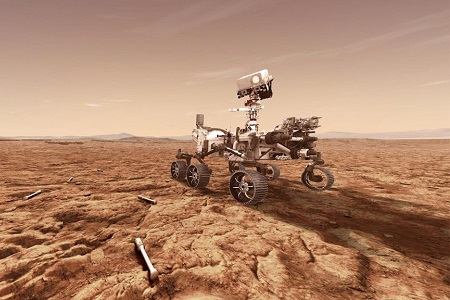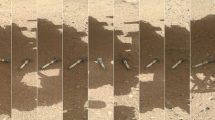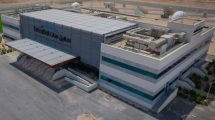 NASA has selected Lockheed Martin to build the Mars Ascent Vehicle (MAV), a small rocket to launch rock, sediment, and atmospheric samples collected by the Perseverance rover into orbit around Mars.
NASA has selected Lockheed Martin to build the Mars Ascent Vehicle (MAV), a small rocket to launch rock, sediment, and atmospheric samples collected by the Perseverance rover into orbit around Mars.
Lockheed Martin Space will provide multiple MAV test units and a flight unit. Work under the contract includes designing, developing, testing, and evaluating the integrated MAV system, and designing and developing the rocket’s ground support equipment.
The cost-plus-fixed-fee Mars Ascent Vehicle Integrated System (MAVIS) contract has a potential value of $194m. The performance period begins no later than February 25 and will extend up to six years.
The award brings NASA a step closer to the first robotic round-trip to bring samples safely to Earth through the Mars Sample Return (MSR) programme.
NASA’s MSR campaign aims to bring scientifically selected samples for study using the most sophisticated instruments around the world. The campaign will fulfill a solar system exploration goal, a high priority since the 1970s and in the last two National Academy of Sciences Planetary Decadal Surveys.
Commenting on the agreement, NASA Administrator Bill Nelson said: “This groundbreaking endeavour is destined to inspire the world when the first robotic round-trip mission retrieves a sample from another planet – a significant step that will ultimately help send the first astronauts to Mars. America’s investment in our Mars Sample Return programme will fulfill a top priority planetary science goal and demonstrate our commitment to global partnerships, ensuring NASA remains a leader in exploration and discovery.”
Set to become the first rocket fired off another planet, the MAV is a crucial part of a campaign to retrieve samples collected by NASA’s Perseverance rover and deliver them to Earth for advanced study. NASA’s Sample Retrieval Lander, another important part of the campaign, will carry the MAV to Mars’ surface, landing near or in Jezero Crater to gather the samples cached by Perseverance. The samples will be returned to the lander, which would serve as the launch platform for the MAV. With the sample container secured, the MAV will then launch.
Once it reaches Mars orbit, the container will be captured by an ESA (European Space Agency) Earth Return Orbiter spacecraft outfitted with NASA’s Capture, Containment, and Return System payload. The spacecraft will bring the samples to Earth in the early- to mid-2030s.
Thomas Zurbuchen, the associate administrator for science at NASA Headquarters in Washington, added: “Committing to the Mars Ascent Vehicle represents an early and concrete step to hammer out the details of this ambitious project not just to land on Mars, but to take off from it. We are nearing the end of the conceptual phase for this Mars Sample Return mission, and the pieces are coming together to bring home the first samples from another planet. Once on Earth, they can be studied by state-of-the-art tools too complex to transport into space.”
This strategic NASA and ESA partnership will be the first mission to return samples from another planet and the first launch from the surface of another planet.












Add Comment